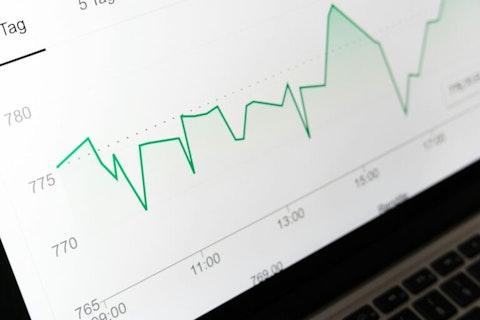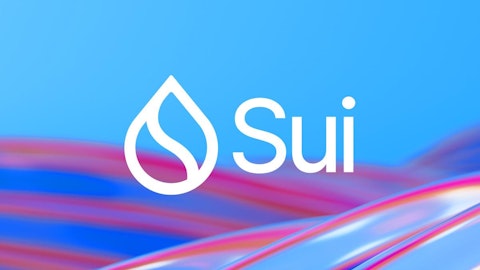In the intricate world of supply chain management, understanding the nuanced differences between demand forecasting and demand planning is crucial – the optimization operations, any reduction in costs, and the enhancement of customer satisfaction all rely on it. While the terms ‘demand forecasting’ and ‘demand planning’ are often used interchangeably, they actually serve distinct functions within a company’s broader strategy for managing demand. Here, we explore the key differences between demand forecasting and demand planning, as well as how they can be effectively integrated to drive business success.

Understanding Demand Forecasting
Demand forecasting is the process of estimating the future demand for a company’s products and/or services based on historical data, market trends, and statistical analyses; this predictive model aims to anticipate customer demand as accurately as possible to ensure that the business can meet it without overstocking or understocking.
Key Characteristics of Demand Forecasting:
- Data-driven approach: The approach to demand forecasting relies heavily on quantitative data from past sales, seasonal trends, and market research
- Short-term and long-term projections: Demand forecasting can range from short-term (weeks or months ahead) to long-term (years ahead) predictions
- Flexibility: Demand forecasts are updated regularly to reflect market changes, new information, or shifts in consumer behavior
Understanding Demand Planning
Demand planning is a more comprehensive process than demand forecasting – in fact, it includes demand forecasting as part of the puzzle, but also incorporates the development of strategies to meet the anticipated demand. Demand planning is an integral part of supply chain planning that involves meticulous coordination across multiple departments, such as sales, marketing, and operations.
Key Characteristics of Demand Planning:
- Strategic and collaborative: Demand planning involves strategic decision-making and collaboration across different departments to align production, procurement, and distribution plans with forecasted demand
- Inventory management: A crucial aspect of demand planning is managing inventory levels efficiently to meet forecasted demand without incurring excessive costs
- Risk management: Demand planning also entails identifying potential risks and developing contingency plans to mitigate those risks
4 Key Differences Between Demand Forecasting and Demand Planning

BlueSkyImage/shutterstock.com
1. Scope
Demand forecasting is all about predicting future demand (sans crystal ball); demand planning, on the other hand, involves strategizing on how to meet this demand.
2. Data vs. Strategy
Demand forecasting is more data-centric, focusing on statistical analyses and models; demand planning, meanwhile, combines this data with strategic planning and cross-functional collaboration.
3. Objective
The primary objective of demand forecasting is to predict future sales accurately; demand planning’s primary goal is to prepare the business to meet these sales projections efficiently and cost-effectively.
4. Flexibility vs. Execution
Demand forecasting needs to be flexible and adaptable to new data, while demand planning focuses on executing strategies based on these forecasts, thus requiring a more stable and longer-term outlook.
How They Work Together
Despite their differences, demand forecasting and demand planning are not mutually exclusive; instead, they complement each other within the supply chain management ecosystem.
Data-Informed Decisions
Demand forecasting offers up the crucial data and insights needed for effective demand planning, as accurate forecasts enable more informed strategic decisions to be made in the demand planning process.
Feedback Loop
The implementation of demand planning strategies provides real-world data that can be used to refine future demand forecasts.
Enhanced Efficiency
By closely integrating demand forecasting with demand planning, businesses can achieve a more agile, responsive supply chain; all while reducing costs and improving customer satisfaction simultaneously for maximum efficiency improvements.
Challenges Faced in Demand Forecasting and Planning

A contemporary banking building, its geometric facade conveying its modernity and corporate stature.
Data Complexity and Accuracy
Businesses often struggle with the sheer volume and complexity of data required for accurate forecasting. This challenge is compounded by the need for data accuracy, which can be affected by incomplete or outdated data sources.
Market Volatility
Market conditions are unpredictable, influenced by numerous external factors like economic shifts, political events, and social trends. This volatility makes it difficult to predict demand accurately.
Cross-Functional Alignment
Ensuring alignment across various departments (sales, marketing, operations) is crucial for effective demand planning but can be challenging due to differing priorities and perspectives.
Technological Limitations
Many organizations rely on outdated or siloed technology systems that can hinder efficient data analysis and sharing, critical for effective forecasting and planning.
Supply Chain Disruptions
Unexpected supply chain disruptions, from natural disasters to global pandemics, pose significant challenges to maintaining accurate demand forecasts and executing plans.
Strategic Solutions and Best Practices
Advanced Analytics and AI
Implementing advanced analytics and artificial intelligence (AI) can significantly enhance the accuracy of demand forecasts by analyzing large datasets and identifying patterns that humans may overlook.
Agile Planning Processes
Adopting agile methodologies in demand planning allows businesses to be more flexible and responsive to market changes, enabling quicker adjustments to forecasts and plans.
Cross-Functional Collaboration
Fostering a culture of collaboration across all departments involved in the supply chain ensures that diverse insights are incorporated into demand planning, leading to more accurate and achievable plans.
Technology Integration
Investing in modern, integrated technology platforms enables more efficient data analysis and sharing, improving the overall effectiveness of forecasting and planning processes.
Continuous Improvement and Monitoring
Regularly reviewing and adjusting demand forecasts and planning strategies based on real-time data and performance metrics can help businesses stay ahead of changes and improve accuracy over time.
Supply Chain Resilience Building
Developing a resilient supply chain, through diversifying suppliers and investing in contingency planning, can mitigate the impacts of disruptions on demand planning and execution.
By addressing these challenges with strategic solutions and best practices, businesses can significantly improve their demand forecasting and planning processes, leading to enhanced operational efficiency, reduced costs, and increased customer satisfaction.
The Key is Successful Integration
While demand forecasting and demand planning serve different purposes, their successful integration is essential for a robust supply chain strategy. Understanding their key differences and how they complement each other can help businesses to optimize their operations, expertly balance supply with demand, and generally navigate the complexities of the market with greater agility and foresight.





